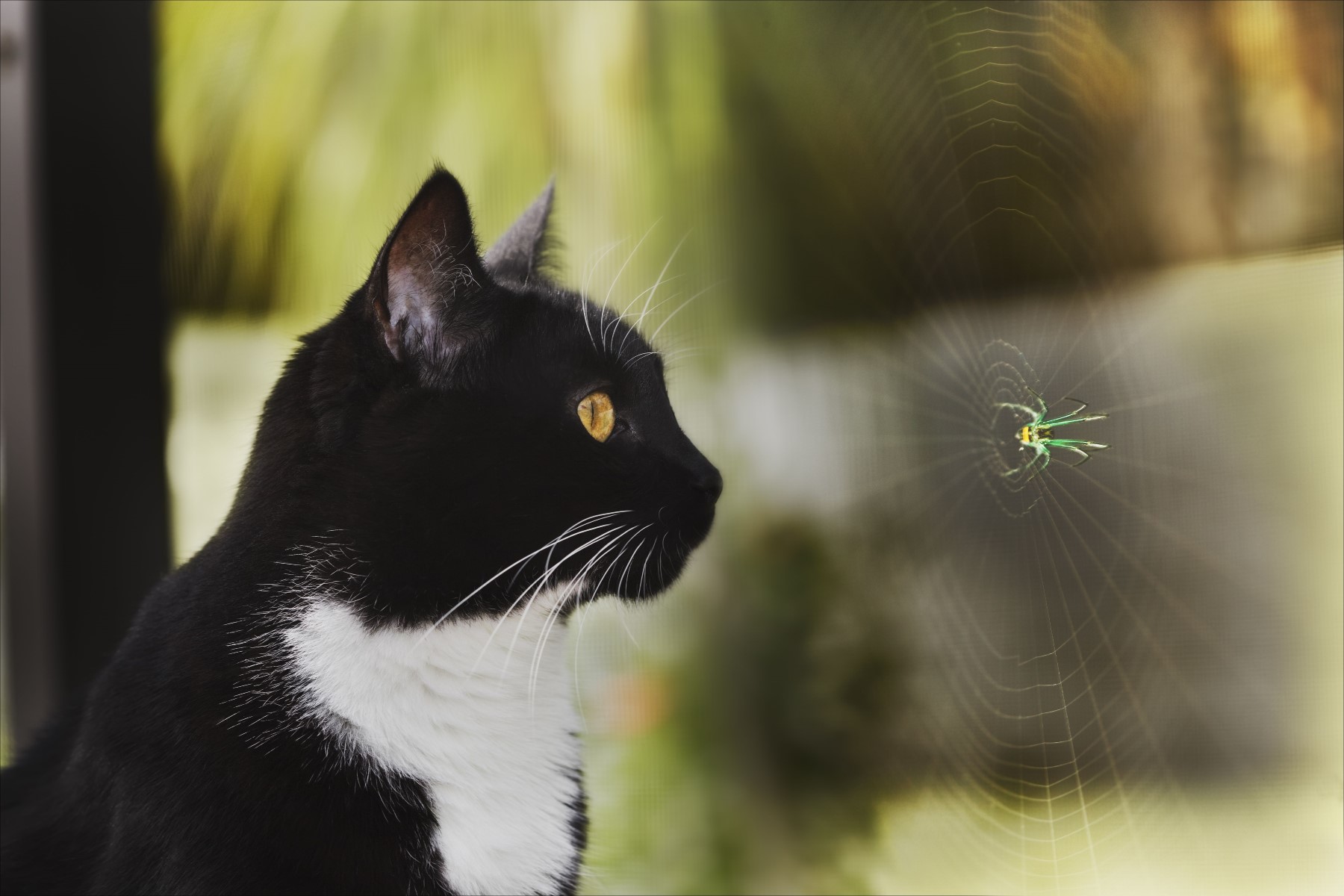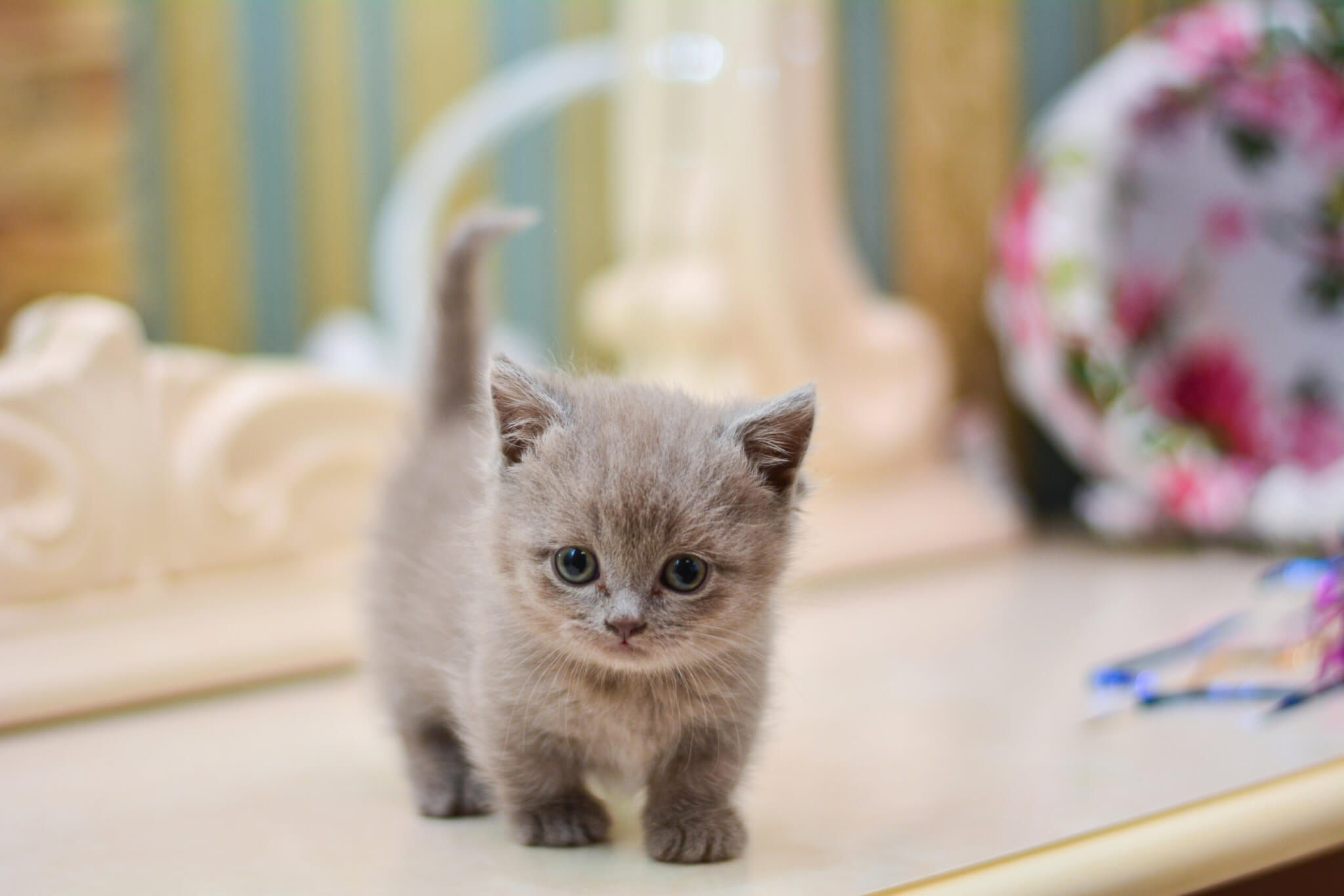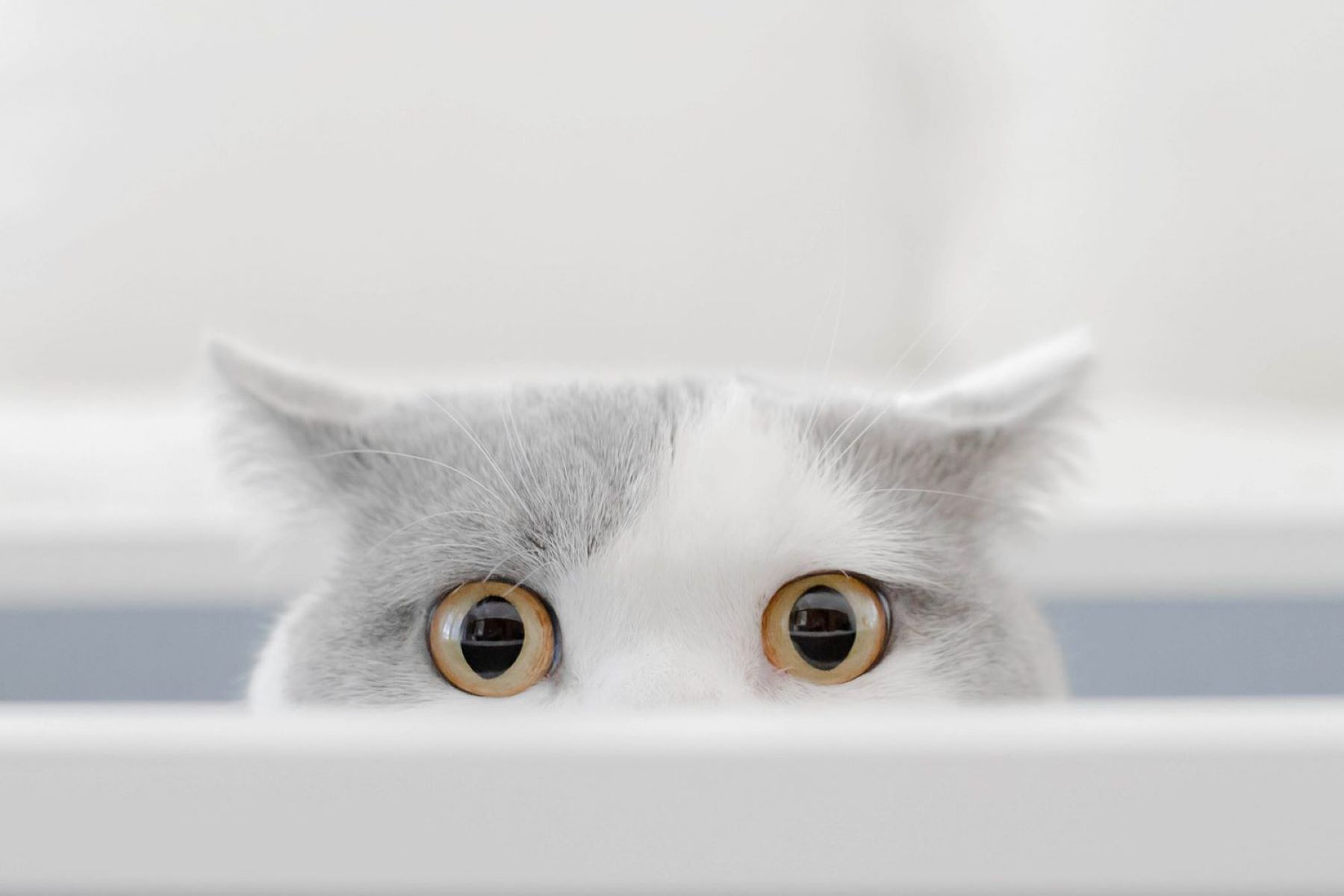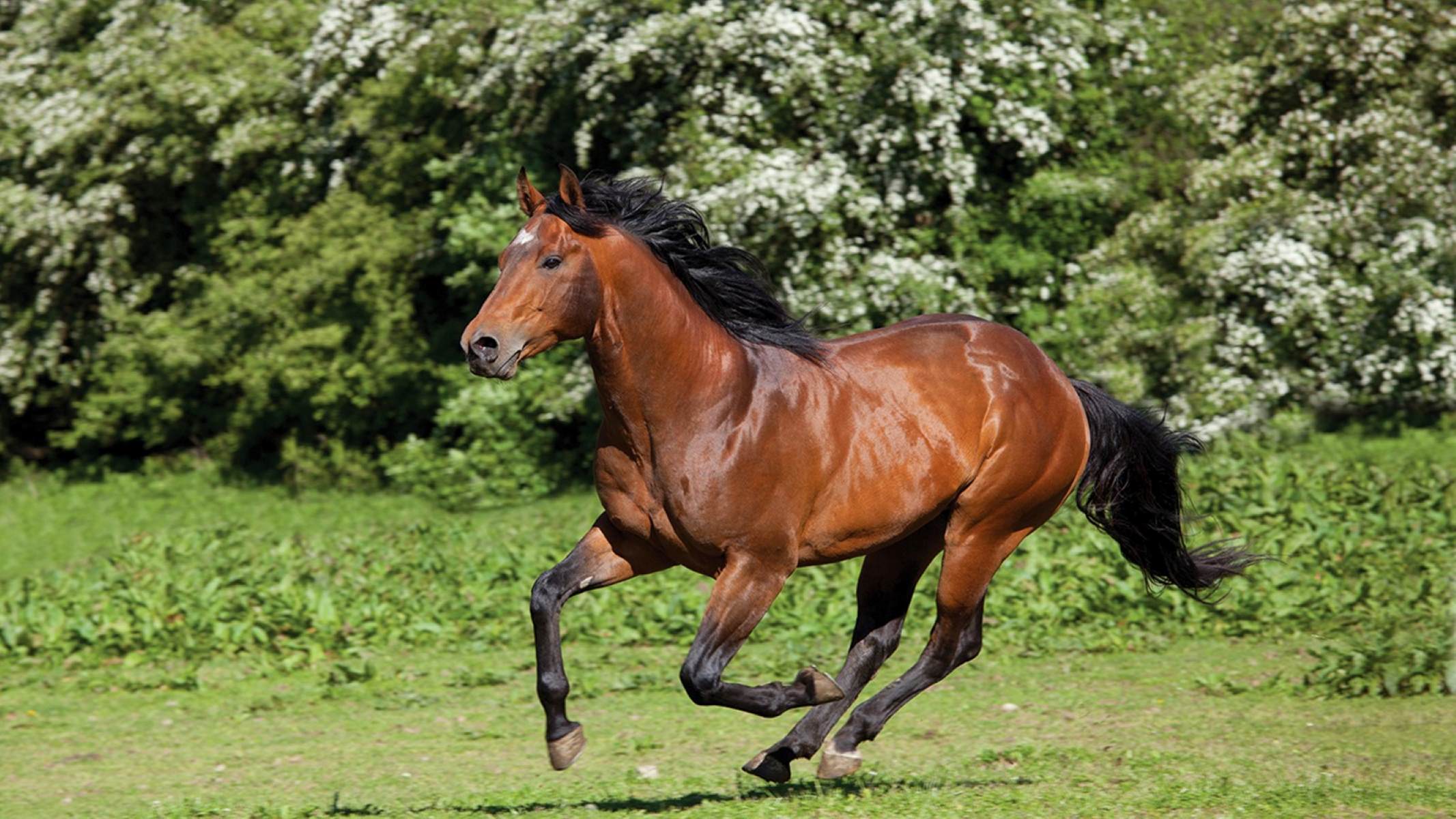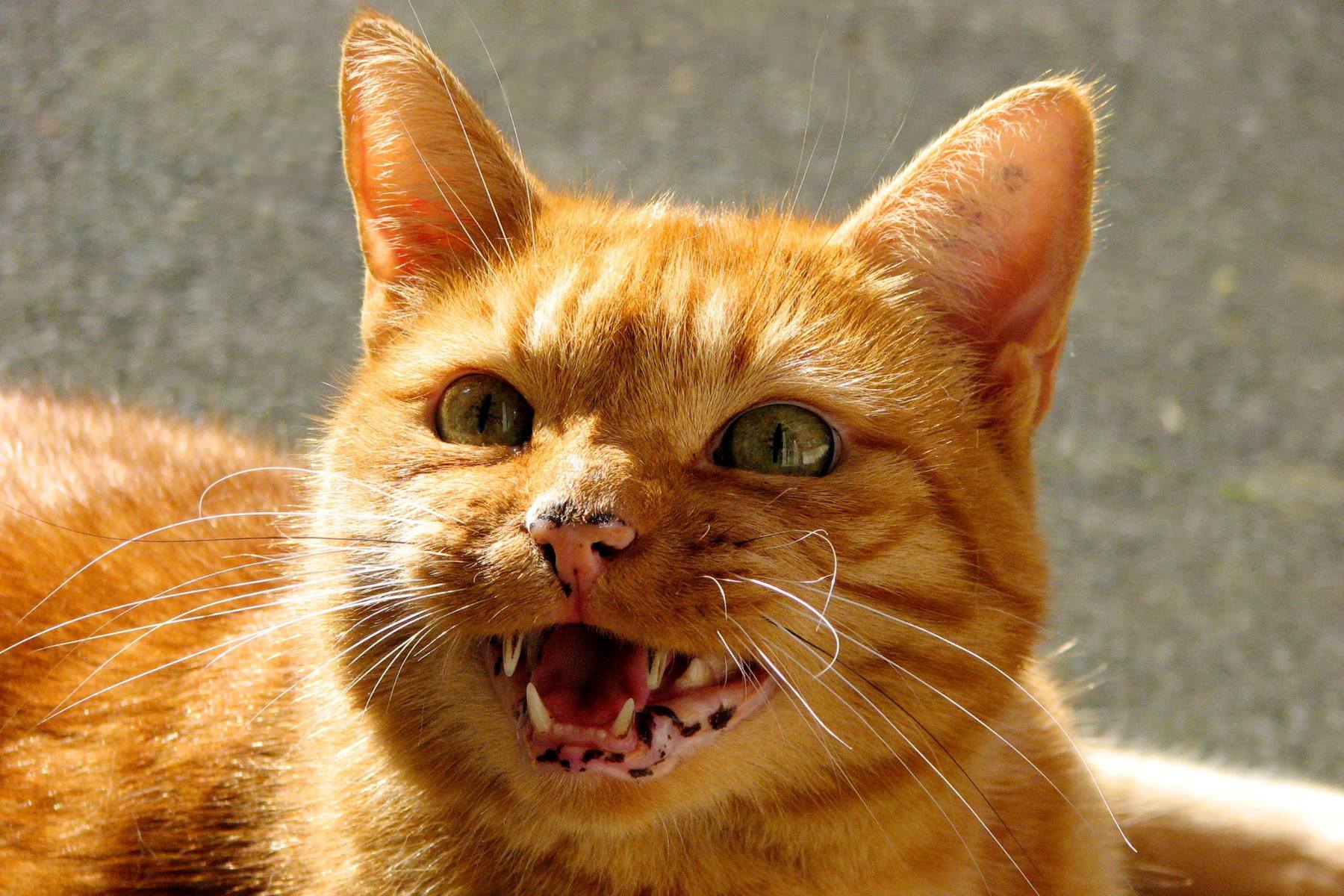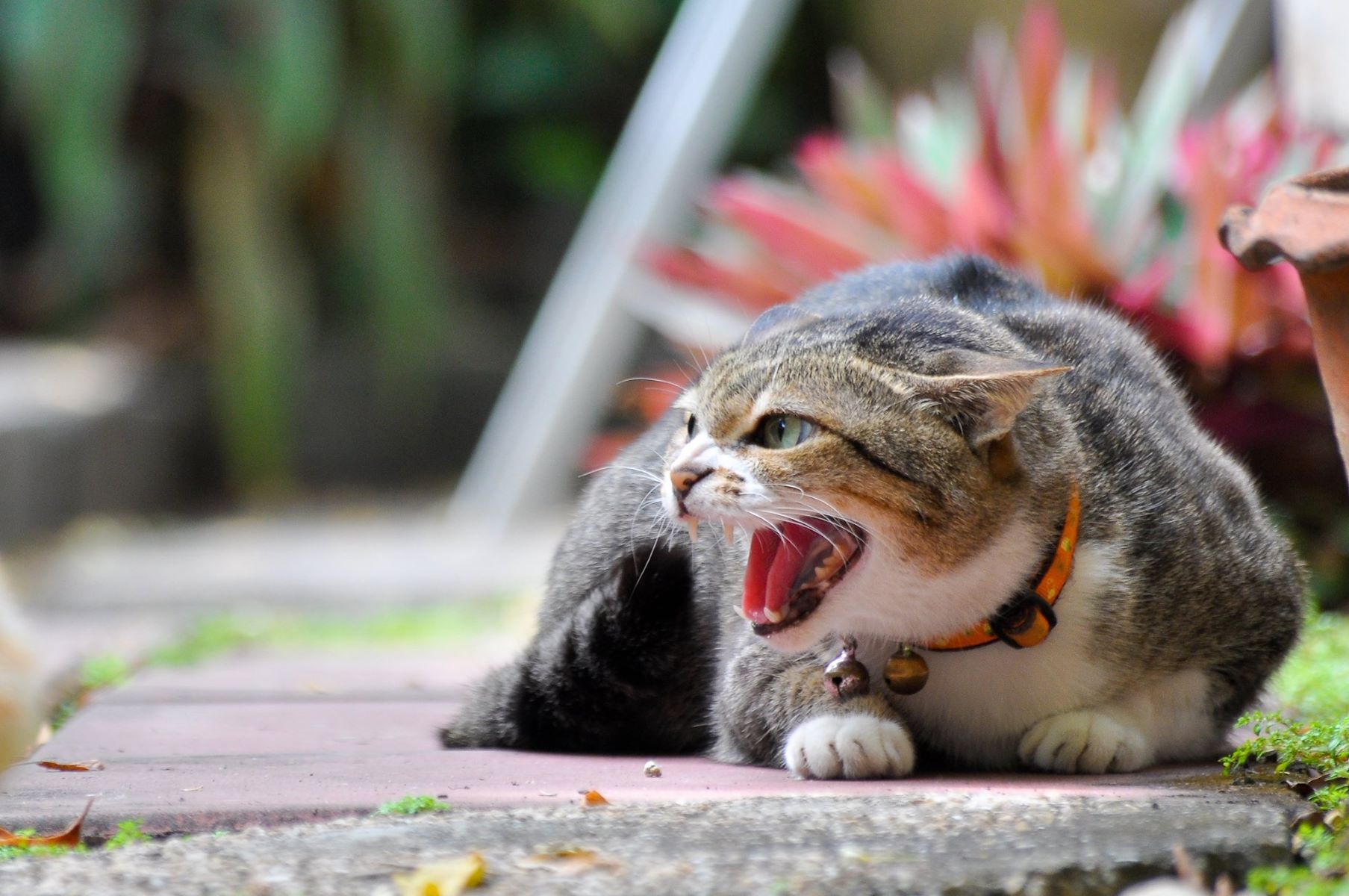Home>Pets & Animals>The Surprising Reason Why Cats Love The Bread Loaf Position


Pets & Animals
The Surprising Reason Why Cats Love The Bread Loaf Position
Published: January 21, 2024
Discover the fascinating reason behind cats' love for the bread loaf position. Explore this intriguing behavior and its connection to pets and animals.
(Many of the links in this article redirect to a specific reviewed product. Your purchase of these products through affiliate links helps to generate commission for Regretless.com, at no extra cost. Learn more)
Table of Contents
Introduction
Cats are fascinating creatures known for their enigmatic behaviors, and one particularly endearing posture they often assume is the "bread loaf" position. This peculiar pose, where a cat tucks its paws underneath its body and rests in a compact, loaf-like form, has captured the attention of feline enthusiasts worldwide. While it may seem like a simple and unassuming posture, the reasons behind why cats love the bread loaf position are quite intriguing.
In this article, we'll delve into the captivating world of feline behavior to uncover the surprising reasons behind this beloved cat posture. From understanding the evolutionary origins of the bread loaf position to exploring the comfort and security it provides to our feline friends, we'll unravel the mysteries behind this endearing behavior. Additionally, we'll share valuable insights on how cat owners can encourage their furry companions to adopt the bread loaf position, enhancing their well-being and strengthening the human-feline bond.
Join us on this enlightening journey as we unravel the secrets behind the beloved bread loaf position and gain a deeper appreciation for the fascinating world of feline behavior.
Understanding the Bread Loaf Position
The bread loaf position is a classic feline posture that captivates cat owners and enthusiasts alike. This endearing pose is characterized by a cat tucking its paws underneath its body, creating a compact and loaf-like form. While it may appear simple, this position holds deeper significance in the realm of feline behavior.
When a cat assumes the bread loaf position, it often seeks a sense of security and comfort. By tucking their paws underneath their body, cats minimize their exposure, creating a protective barrier against potential threats. This instinctual behavior is rooted in their wild ancestry, where concealment and vigilance were crucial for survival.
Moreover, the bread loaf position allows cats to regulate their body temperature more effectively. By curling up and minimizing their surface area, cats can conserve body heat, especially in cooler environments. This natural adaptation stems from their evolutionary history as desert-dwelling hunters, where the ability to conserve energy and maintain optimal body temperature was essential for survival.
In addition to its practical benefits, the bread loaf position also serves as a manifestation of a cat's contentment and relaxation. When a cat feels secure and at ease in its environment, it is more likely to assume this position as a reflection of its emotional state. Observing a cat in the bread loaf posture can provide valuable insights into its well-being and level of comfort within its surroundings.
Understanding the bread loaf position goes beyond its physical appearance; it offers a glimpse into the intricate world of feline behavior and instincts. By recognizing the multifaceted nature of this seemingly simple posture, cat owners can develop a deeper appreciation for their feline companions and gain valuable insights into their unique behaviors and needs.
As we unravel the mysteries behind the bread loaf position, we gain a deeper understanding of the complex and captivating nature of our beloved feline friends. This insight allows us to forge stronger bonds with our cats and create environments that cater to their innate instincts and well-being.
The Evolutionary Reason Behind the Bread Loaf Position
The bread loaf position, often observed in cats, is not merely a whimsical posture; it is deeply rooted in the evolutionary history of felines. To comprehend the evolutionary significance of this behavior, we must journey back to the wild origins of domestic cats.
In the wild, cats' ancestors were skilled hunters and adept at navigating diverse environments, from expansive grasslands to dense forests. Survival hinged on their ability to remain vigilant and conceal themselves from potential threats, such as larger predators or rival animals. The instinct to minimize exposure and create a protective barrier is ingrained in the genetic makeup of modern domestic cats.
The bread loaf position serves as a strategic adaptation that allows cats to camouflage themselves and reduce their vulnerability. By tucking their paws underneath their bodies and assuming a compact form, cats minimize their silhouette, making it easier for them to blend into their surroundings. This behavior reflects a deeply ingrained survival instinct, enabling cats to remain inconspicuous and vigilant, even in domestic settings.
Furthermore, the bread loaf position facilitates thermoregulation, a critical aspect of feline survival. Cats, as descendants of desert-dwelling hunters, have retained the ability to conserve body heat. By curling up and minimizing their surface area, cats can retain warmth, especially in cooler environments. This evolutionary adaptation allowed wild cats to thrive in diverse habitats and endure fluctuating temperatures.
The innate tendency to assume the bread loaf position is a testament to the enduring influence of feline ancestry. Despite the comforts of domesticity, cats instinctively revert to behaviors that have been honed over generations. This behavior serves as a poignant reminder of the resilience and adaptability that have enabled cats to endure and thrive in a variety of environments throughout history.
By recognizing the evolutionary underpinnings of the bread loaf position, cat owners can gain a profound appreciation for the intricate interplay between instinct and adaptation in feline behavior. Understanding this behavior not only enriches our perception of cats but also deepens our connection with these remarkable creatures, fostering a greater understanding of their intrinsic nature.
In unraveling the evolutionary significance of the bread loaf position, we gain profound insights into the enduring legacy of feline evolution and the remarkable adaptability of our beloved companions.
The Comfort and Security of the Bread Loaf Position
The bread loaf position is not only a display of a cat's physical form but also a testament to the comfort and security it seeks in its environment. When a cat assumes the bread loaf position, it is a clear indication of its need for a safe and tranquil space. By tucking their paws underneath their bodies and assuming a compact posture, cats create a shielded and secure environment that allows them to relax and unwind.
This posture serves as a protective mechanism, enabling cats to minimize their vulnerability and maintain a heightened sense of awareness. By curling up in the bread loaf position, cats create a physical barrier that shields their vital organs and reduces their exposure to potential threats. This behavior is deeply rooted in their evolutionary instincts, reflecting the inherent need for vigilance and self-preservation.
Moreover, the bread loaf position provides a sense of warmth and comfort for cats. By compacting their bodies and minimizing their surface area, cats can effectively conserve body heat, especially in cooler environments. This innate ability to regulate body temperature aligns with cats' evolutionary history as resilient and adaptable hunters, capable of thriving in diverse habitats.
Furthermore, the bread loaf position serves as a manifestation of a cat's emotional well-being. When a cat feels secure and content in its surroundings, it is more likely to assume this posture as a reflection of its relaxed state. The act of tucking their paws underneath their bodies signifies a level of trust and comfort in their environment, allowing them to let their guard down and embrace a sense of tranquility.
As cat owners, understanding the significance of the bread loaf position offers valuable insights into our feline companions' emotional and physical needs. Creating a conducive environment that caters to their need for security and comfort can enhance their overall well-being and strengthen the bond between humans and cats. By recognizing the multifaceted nature of this beloved posture, we can cultivate spaces that promote relaxation and security for our cherished feline friends.
In essence, the bread loaf position encapsulates the essence of a cat's quest for comfort, security, and emotional contentment. By acknowledging the profound significance of this behavior, we gain a deeper understanding of the intricate world of feline instincts and emotions, fostering a nurturing and enriching environment for our beloved cats.
How to Encourage Cats to Adopt the Bread Loaf Position
Encouraging cats to adopt the bread loaf position involves creating an environment that fosters feelings of security, comfort, and relaxation. By understanding the factors that contribute to a cat's inclination to assume this posture, cat owners can take proactive steps to promote and encourage this behavior in their feline companions.
Provide Cozy and Secure Spaces
Creating cozy and secure spaces within the home can entice cats to assume the bread loaf position. Soft, plush bedding placed in quiet and secluded areas offers cats a sense of comfort and security, making it an inviting space for them to curl up and relax. Additionally, providing elevated perches or enclosed spaces, such as cat trees or cozy nooks, allows cats to retreat to a secure environment where they can comfortably assume the bread loaf position.
Temperature Regulation
Maintaining a comfortable ambient temperature within the home can encourage cats to adopt the bread loaf position as a means of thermoregulation. Ensuring that the environment is neither too cold nor too warm enables cats to find a comfortable spot where they can regulate their body temperature by assuming the compact posture. Placing cozy blankets or heated pads in designated areas can further entice cats to curl up in the bread loaf position for warmth and comfort.
Minimize Stress and Anxiety
Reducing stress and anxiety in a cat's environment is crucial for encouraging the adoption of the bread loaf position. Cats are more likely to assume this posture when they feel safe and at ease in their surroundings. Creating a calm and predictable environment, providing enriching activities, and offering opportunities for mental and physical stimulation can alleviate stress and promote relaxation, making cats more inclined to assume the bread loaf position as a reflection of their contentment.
Respect Personal Space
Respecting a cat's need for personal space is essential for encouraging the bread loaf position. Cats are more likely to assume this posture when they feel undisturbed and unobtrusive. Allowing cats to have uninterrupted moments of solitude and providing them with the freedom to choose their resting spots fosters a sense of autonomy, encouraging them to assume the bread loaf position in their preferred spaces.
By implementing these strategies and creating a conducive environment that prioritizes a cat's need for security, comfort, and relaxation, cat owners can encourage their feline companions to adopt the beloved bread loaf position. Understanding and catering to a cat's innate instincts and preferences fosters a harmonious and enriching bond between humans and their cherished feline friends.
Conclusion
In unraveling the mysteries behind the beloved bread loaf position, we have embarked on a captivating journey into the intricate world of feline behavior. The simple yet profound posture assumed by cats holds a wealth of significance, encompassing elements of evolutionary adaptation, emotional well-being, and the innate quest for security and comfort.
The bread loaf position serves as a poignant reminder of the enduring influence of feline ancestry, reflecting the resilience and adaptability that have enabled cats to thrive in diverse environments throughout history. From the arid landscapes of their desert-dwelling ancestors to the cozy confines of modern homes, cats have retained their instinctual behaviors, offering a glimpse into their remarkable evolutionary journey.
Moreover, the bread loaf position provides valuable insights into the emotional state and well-being of our feline companions. When a cat assumes this posture, it signifies a sense of trust, contentment, and relaxation in its environment. By recognizing and honoring a cat's need for security and tranquility, we can cultivate spaces that promote emotional well-being and enhance the bond between humans and their cherished feline friends.
As cat owners, understanding the multifaceted nature of the bread loaf position empowers us to create environments that cater to a cat's instinctual behaviors and emotional needs. By providing cozy and secure spaces, regulating ambient temperatures, and minimizing stress and anxiety, we can encourage our feline companions to embrace the bread loaf position, fostering a harmonious and enriching living environment for both cats and humans.
The journey into the world of the bread loaf position has not only deepened our appreciation for the captivating behaviors of cats but has also strengthened our connection with these remarkable creatures. By acknowledging the evolutionary underpinnings and emotional significance of this beloved posture, we have gained a profound understanding of the intricate interplay between instinct, adaptation, and emotional well-being in the lives of our beloved feline companions.
In essence, the bread loaf position encapsulates the essence of a cat's quest for comfort, security, and emotional contentment. As we continue to unravel the mysteries of feline behavior, let us embrace the enduring legacy of the bread loaf position and create nurturing environments that honor the innate instincts and emotional needs of our cherished cats.
